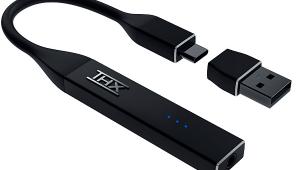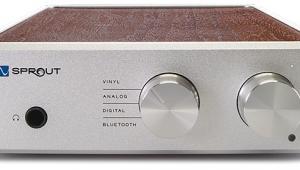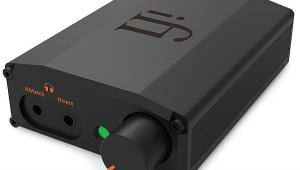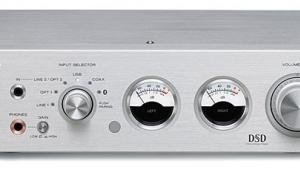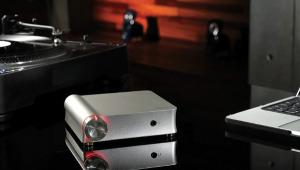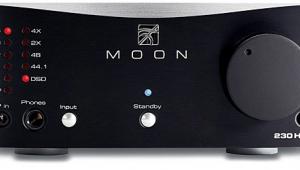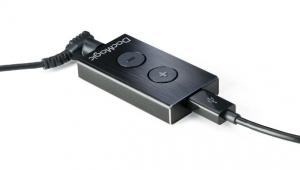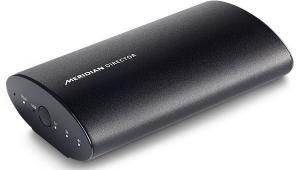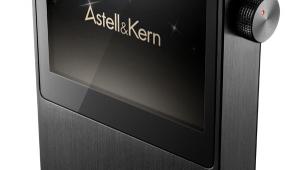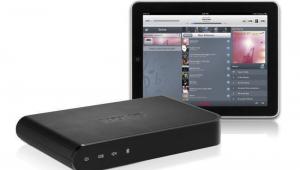Pro-Ject Pre Box S2 Digital Headphone Amp/DAC Review Page 2
Listening
During my listening, the Pre Box’s performance was characterized by an admirably clean and unfatiguing top end, though it could be frustratingly reticent with higher-end headphones. In a day spent with the HiFiMan, for instance, it offered plenty of easy listening but not much sparkle. Flipping through the numerous filter modes did little to alter this first impression. The Pre Box didn’t hit its stride until I plugged in the Sennheiser and the Sony, whose distinct but vastly different personalities were permitted to emerge.
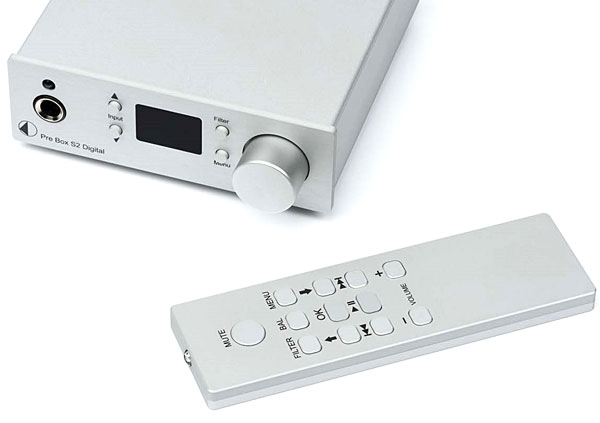
I hadn’t expected much from the Sennheiser: it has a reticent top end of its own and I’d expected that the combination with the Pre Box would be overkill. Instead, their mutual smoothness in the presence region let me push the volume up enough to compensate for the Sennheiser’s modest bass, making the sound bigger and beefier than it normally would be in everything from symphonic staples like Beethoven’s Fifth (Carlos Kleiber, Vienna Philharmonic, 24/88.2 FLAC) to rock stompers like Led Zeppelin’s “Black Dog” (24/92 FLAC). Images, though not strongly outlined, were generously scaled, beautifully fleshed out, and darkly colorful, giving extra intensity to lushly arranged tracks like Nick Drake’s “Riverman” and “Hazy Jane II” (24/96 FLAC).
The Sennheiser HD600 was the least sensitive model I used and required the Pro-Ject to play at the top of its volume range, usually –15 to –8 on a scale of –80 to 0. But I heard no sense of strain. Incidentally, the Pre Box and the Sennheiser share a list price of $399. Don’t make too much of that; I’ve heard expensive headphones sound great with inexpensive amps and inexpensive headphones sound great with expensive amps.
The Sony MDR-V6, which costs only a quarter as much as the already reasonably priced Pre Box, has a treble-forward sound that formed a perfect yin-yang with the Pro-Ject amp. Playing David Chesky’s “Ben’s Farm in Vermont” (24/192 FLAC), my go-to track for high-frequency finery, the chiming percussion instruments were not just audible, but integrated into a better musical flow than I can recall hearing with any pairing of headphones and amp, and I’ve played this track through many. The Nick Drake tracks were beautifully imaged, albeit in a differently balanced way. The Sony/Pro-Ject combo also shaved off the digital edges from Richard Thompson’s home-studio-recorded “They Tore the Hippodrome Down” (24/88.2 FLAC) to get at its bittersweet musical essence.
Sampling MQA
The Pre Box provided me with my first chance to do extended listening to MQA (Master Quality Authenticated) as delivered via Tidal streaming. MQA is a computationally intensive (and somewhat controversial) lossy audio codec that can “fold down” the ultrasonic content of bulky hi-res audio signals, resulting in CD-sized files and streams. I tried to compare MQA streaming with non-MQA files, concentrating on tracks duplicated in Tidal and my hi-res music library. Of course, this was an apples-and-oranges comparison—I could never be certain that both were sourced from the same master. But one difference immediately obvious with all three headphones was level—the MQA tracks were invariably louder, even with volume controls maxed in both apps. I used the Pre Box’s volume control to roughly match levels. In a few cases where Tidal carried both MQA and non-MQA versions, the MQA versions were still louder.
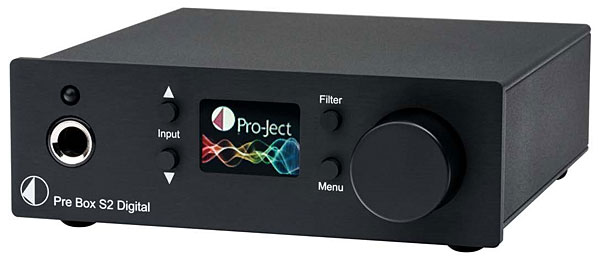
While the stronger signal almost certainly gave the MQA streams a subjective advantage, the Pre Box always exhibited excellent behavior at the top end of its volume range. Sticking with the MQA versions, Kleiber’s Beethoven was warm yet up-close, a combination I don’t often hear, and I felt the world-class Vienna Philharmonic string sound was colorful, and realistic. Nick Drake’s vocal on “Hazy Jane II” and the backing vocals on Donald Fagen’s “Maxine” followed the same course, seeming less mechanical and more corporeal.
While these impressions held true for all three headphones, the main beneficiary was the HiFiMan, whose performance progressed from just acceptable to truly involving. My past experience suggests that it often benefits from incremental improvements in hi-res audio formats. MQA got a better than passing grade from the Sennheiser and Sony, but with the HiFiMan, it turned up aces.
Conclusion
The Pro-Ject Pre Box S2 Digital offers a step up in performance with low- to medium-priced headphones, and it makes for an especially good match with those that have a treble emphasis. It also serves as an introduction to MQA. If it errs, it does so on the side of comfort and listenability. You’d have to spend a lot more to improve on Pro-Ject’s Pre Box S2.
